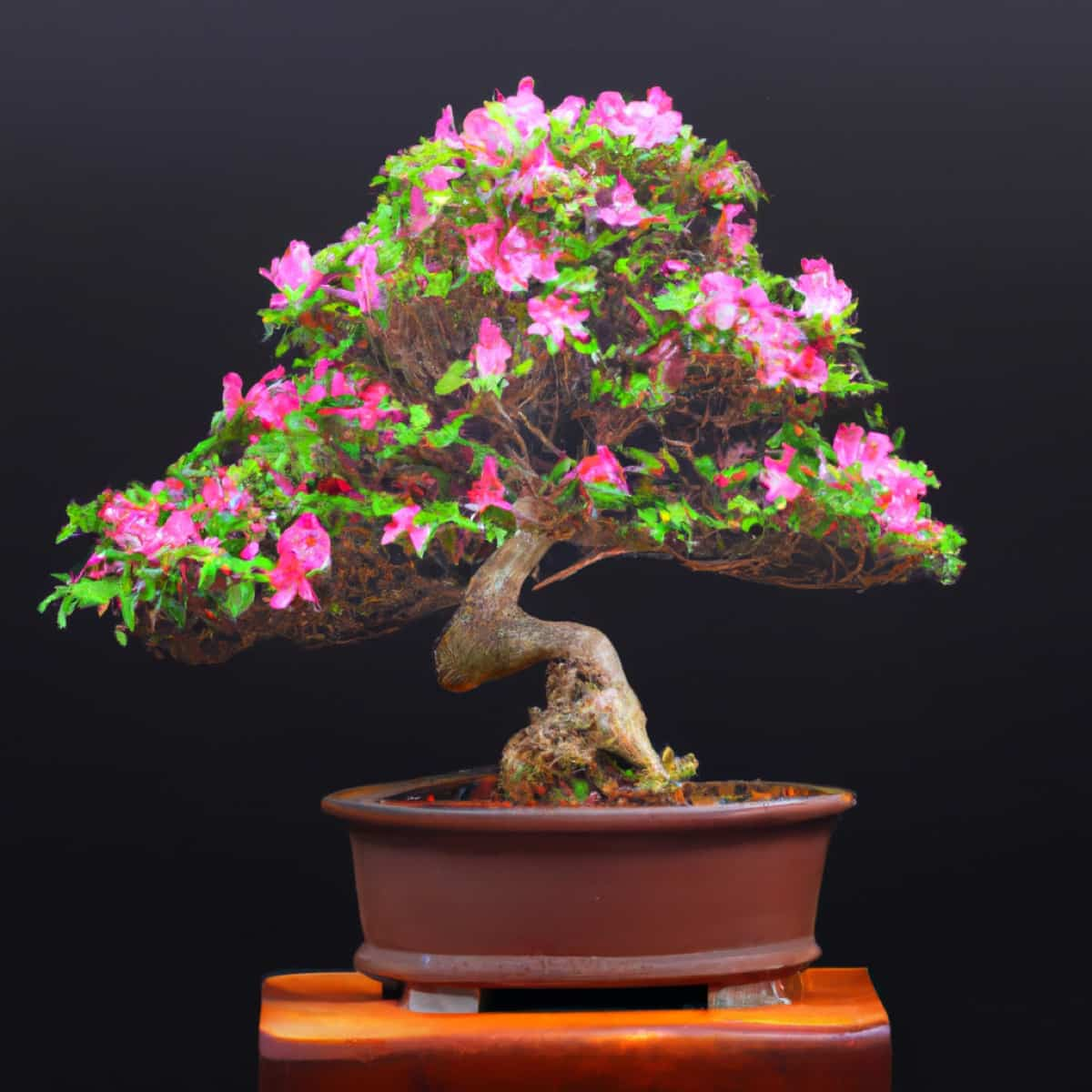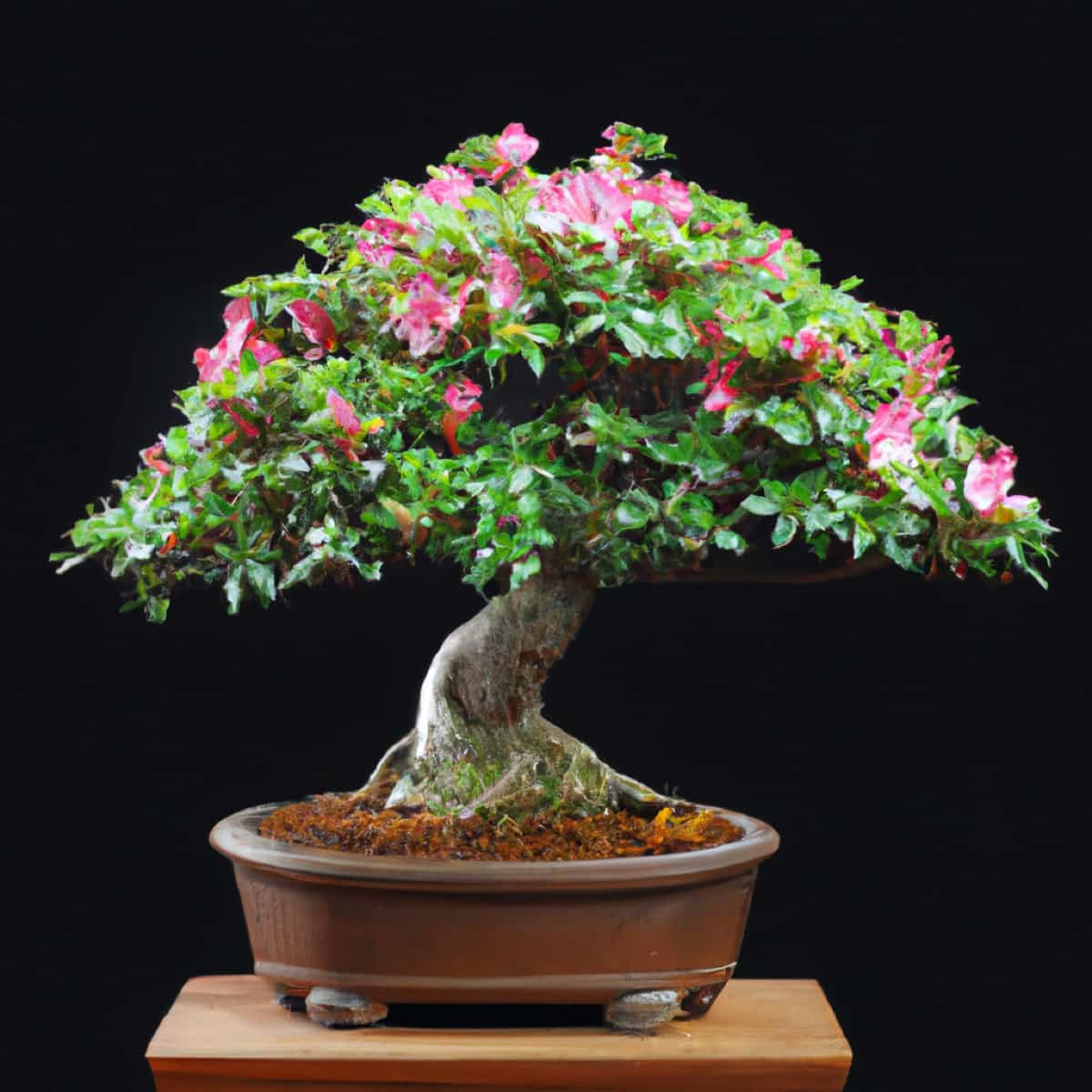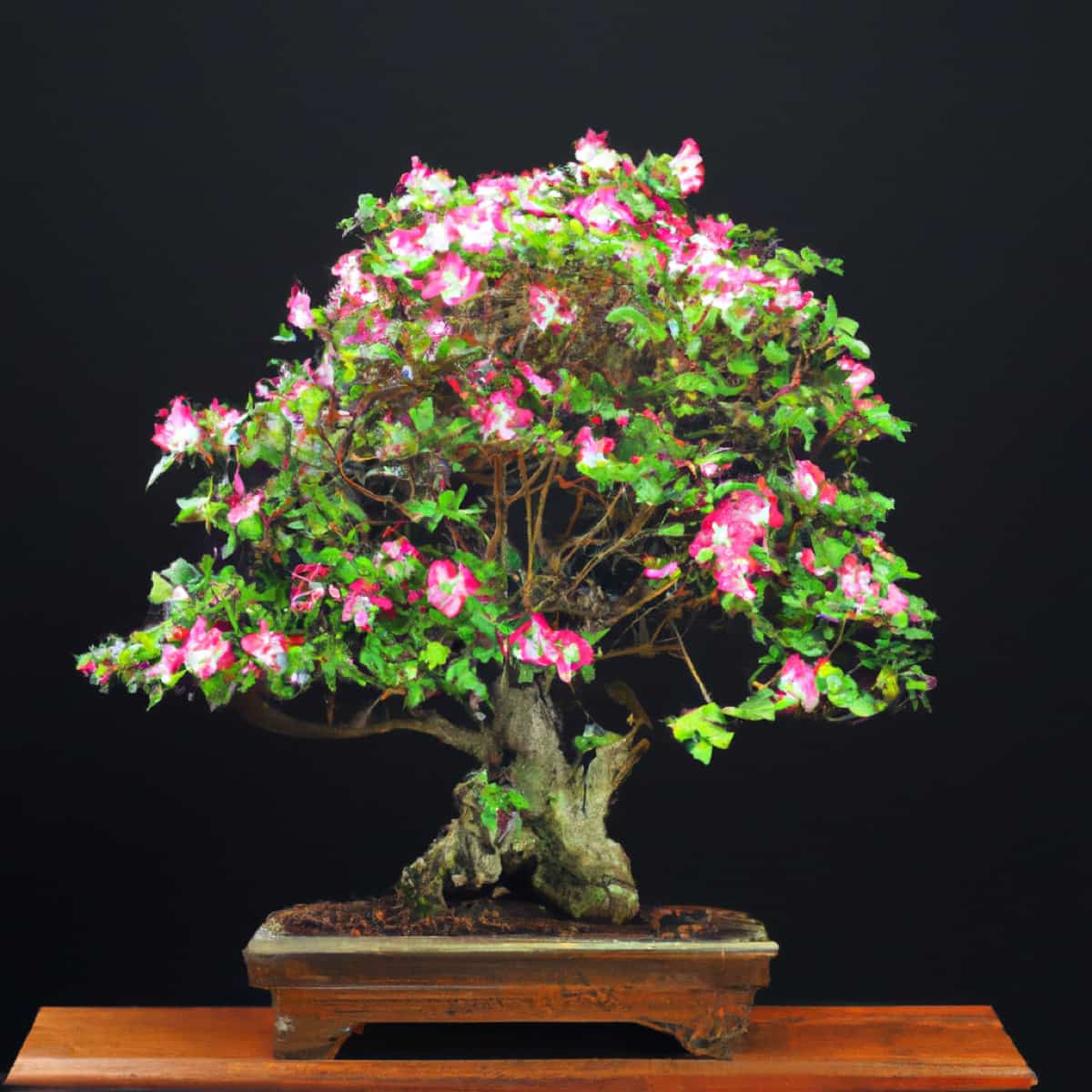Embodying the fusion of culture, beauty, and nature, Azalea Bonsai offers enthusiasts a captivating horticultural experience. Known for their impressive blooms and verdant leaves, these miniature trees make an enchanting addition to any indoor or outdoor space. Here we learn about Azalea bonsai care indoors, offering a detailed roadmap on the art of Azalea bonsai care instructions, from planting seeds to repotting.

You will also learn the best Azalea for bonsai cultivation, the suitable Azalea bonsai fertilizer to promote growth, and how to approach Azalea bonsai pruning to shape your tree aesthetically. Furthermore, this guide will shed light on choosing the best Azalea bonsai soil for healthy growth, ensuring you are armed with all the knowledge you need to see your Azalea bonsai flourish.
How to Grow and Care for Azalea Bonsai
How to Plant Azalea Bonsai From Seeds
Starting your Azalea bonsai journey begins with planting the seeds. Purchase high-quality Azalea seeds from a reputable source to ensure the best start for your bonsai. The first stage entails seed stratification, simulating the natural winter environment to enhance seed viability for germination.
This can be accomplished by enclosing the seeds in a sealed container with a damp substrate like peat moss, and refrigerating them for approximately six weeks. After stratification, plant the seeds in a seed tray filled with bonsai soil. Keep the tray in a warm, well-lit area, ensuring the soil remains damp until germination occurs.
Step-by-step Guide to Growing Azalea Bonsai Indoors
When it comes to Azalea bonsai care indoors, consistency is key. Start by positioning your Azalea bonsai in a location with bright, indirect sunlight. Direct exposure can scorch the leaves, while inadequate light can stunt growth. Temperature is also critical. Azaleas prefer a cooler indoor climate, around 60-70 degrees Fahrenheit.
Overheating can cause dehydration, leaf drop, and even death. To ensure ideal conditions, it is advisable to utilize a humidity tray or room humidifier to maintain suitable levels of moisture. Adequate watering is crucial, but caution should be exercised to prevent waterlogging, which can result in root decay. Vigilantly observe the soil’s moisture content, and when the surface appears dry, administer thorough watering until excess water drains from the bottom.
Essential Care Tips for Azalea Bonsai Trees
Azalea bonsai care instructions extend beyond just light, temperature, and water. Like all plants, Azaleas require nutrients to thrive. A balanced Azalea bonsai fertilizer, rich in Nitrogen, Phosphorus, and Potassium, is recommended.
Fertilize bi-weekly during the growing season (spring and summer), reducing to monthly applications during fall and ceasing entirely during winter dormancy. Azalea bonsai repotting is another crucial aspect of care. Generally, young Azaleas should be repotted every two years, while older ones can go for three to four years. This process prevents root-bound conditions and replenishes depleted nutrients in the soil.
Best Soil Mix for Azalea Bonsai Cultivation
Choosing the right Azalea bonsai soil is critical for your bonsai’s overall health and growth. A good mix should provide excellent drainage while retaining enough moisture and nutrients. A blend of Akadama, Pumice, and Organic Potting Compost in equal proportions is commonly recommended. Akadama is a Japanese clay granule that provides great water retention and nutrient storage. Pumice aids drainage and aeration, while organic potting compost supplies essential nutrients. A layer of sphagnum moss on top can also help to retain moisture.
Pruning Techniques for Shaping Azalea Bonsai
Azalea bonsai pruning is both a practical and artistic task. It helps control growth, maintain the tree’s size and shape, and enhance its aesthetic appeal. Prune your Azalea after it finishes blooming, usually in late spring or early summer. Start by removing dead or diseased branches. Then move on to shaping, cutting back long, overgrown branches and any that disrupt the tree’s desired form. Always use sharp, clean tools to make clean cuts that heal quickly, minimizing the risk of infection.
Watering Schedule for Healthy Azalea Bonsai Trees
Adequate watering is essential for the proper maintenance of Azalea bonsai trees. Azaleas prefer moist but well-drained soil, so it’s essential to balance providing enough water and preventing waterlogging. Water your bonsai when the topsoil feels dry to the touch. During the growing season, this might mean watering daily. However, always check the soil before watering, as overwatering can cause root rot, one of the most common causes of bonsai tree death.
In case you missed it: How to Grow and Care for Carmona Bonsai: Planting, Pruning, and Repotting

Preventing and Treating Common Pests and Diseases in Azalea Bonsai
Like other plants, Azalea bonsai can fall prey to various pests and diseases. Common pests include aphids, spider mites, and scale insects, while diseases often involve fungal infections such as root rot or leaf spot. Preventive measures include proper watering, ensuring good airflow around the plant, and regularly inspecting the bonsai for early signs of problems. If an issue arises, treat it promptly with appropriate organic or chemical remedies.
Understanding the Ideal Lighting Conditions for Azalea Bonsai
Light is essential for the development and overall health of your Azalea bonsai. These trees prefer bright, indirect light, which promotes strong, healthy growth without risking leaf scorch. If you’re growing your Azalea bonsai indoors, place it near a north or east-facing window for the best light exposure. However, avoid placing the tree too close to the window, as extreme temperature changes can harm the plant.
Fertilizing Methods for Promoting Growth in Azalea Bonsai
Fertilizing is a key component of Azalea bonsai care. A balanced Azalea bonsai fertilizer, rich in Nitrogen, Phosphorus, and Potassium, can provide the essential nutrients your bonsai needs to flourish. Apply the fertilizer according to the product’s instructions, generally every two weeks during the growing season, reducing to monthly in the fall and none during the winter when the tree is dormant.
Winter Care Guidelines for Protecting Azalea Bonsai From Cold Temperatures
Winter can be a challenging time for Azalea bonsai, especially if you live in a region with harsh winters. Protecting your bonsai from freezing temperatures is important, which can damage or even kill the tree. Move your Azalea bonsai indoors before the first frost, placing it in a cool, well-lit area.
Be mindful of heating vents, which can dry out the bonsai. Continue watering the bonsai, but reduce the frequency as the tree’s water will decrease during dormancy. Remember, winter care is vital to ensuring your Azalea bonsai emerges in spring, ready to dazzle with its vibrant display of blooms.
In case you missed it: How to Grow and Care for Lilac Bonsai: Planting, Repotting, and Pruning

Conclusion
Azalea bonsai trees offer endless delight with their elegant blossoms and lush foliage. These miniature wonders can thrive with proper care, the right soil mix, regular pruning, and a strict watering schedule. Keeping them disease-free is equally important, providing optimum light conditions, and regular fertilizing. And finally, safeguarding them during winter ensures their survival and growth.
- Feed Your Flock for Less: Top 10 Tips to Save on Chicken Feed
- Ultimate Guide to Ossabaw Island Hog: Breeding, Raising, Diet, and Care
- Hatching Answers: The Top 10 Reasons Your Chickens Aren’t Laying Eggs
- Eggs and Economics: Breaking Down the Cost of Raising Backyard Chickens
- Defend Your Greens: Proven Methods to Keep Iguanas Out of Your Garden
- Ultimate Guide to Cinnamon Queen Chicken: A Comprehensive Guide for Beginners
- Ultimate Guide to California Tan Chicken: Breeding, Raising, Diet, Egg-Production and Care
- Ultimate Guide to Marsh Daisy Chicken: Breeding, Raising, Diet, and Care
- 10 Types of Chicken Farming Businesses You Can Start for Profits